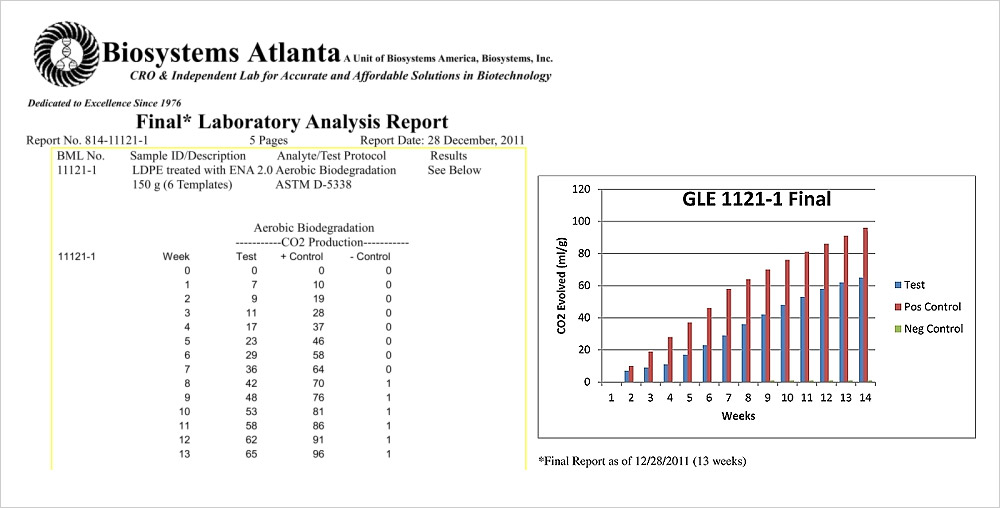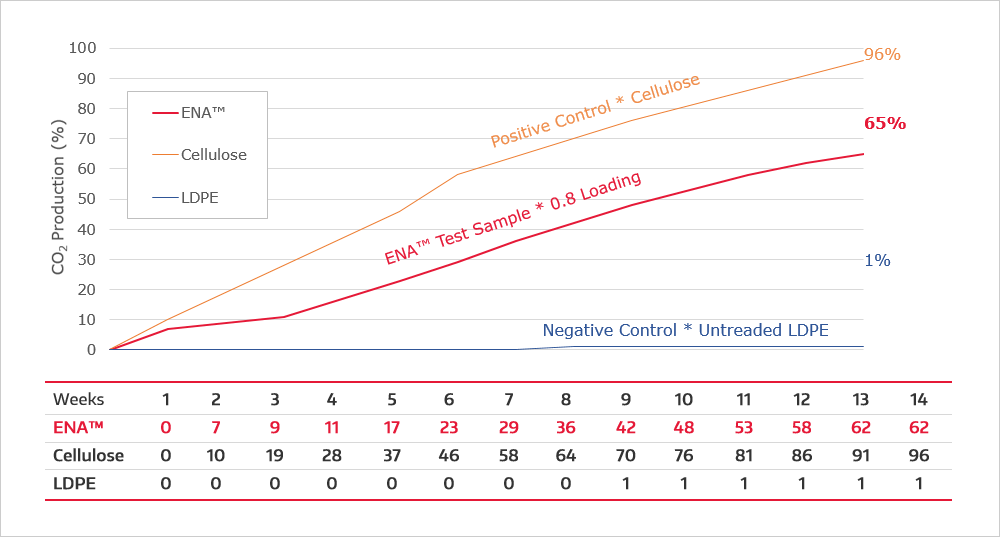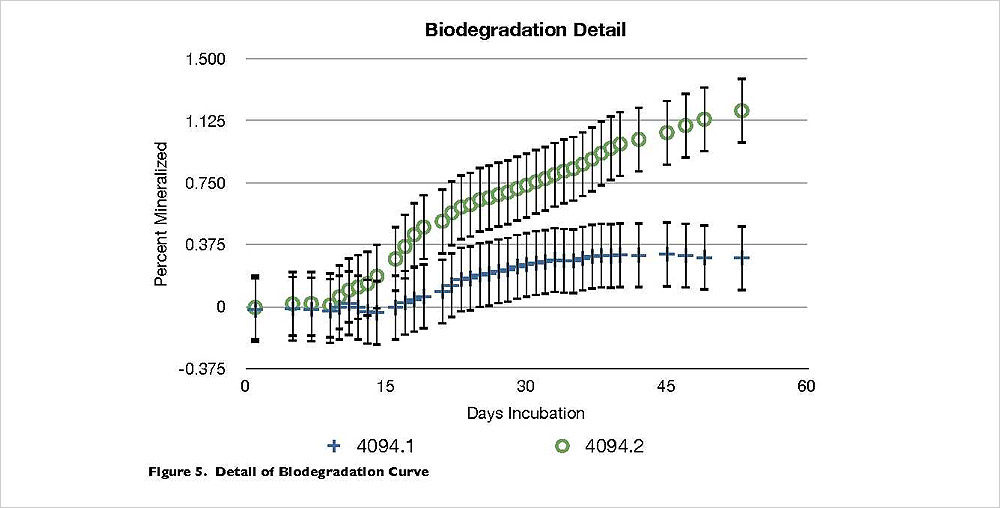

Aerobic test results for an LDPE sample treated with 8% of ENATM's active ingredients.
Here is the data reported to us by Dr. G.K. Batra of Biosystems Inc., in the report of their testing of the sample we submitted to them for testing per the ASTM 5338 protocol for testing aerobic biodegradation of plastics :


Summary by Tim Dunn, M.A.
The test lab found that a 3mm thick sample in anaerobic conditions produced 1.2% biogas in 53 days. An amount equal to the thickness of an ordinary shopping bag (12.5 to 15 microns thick) completely biodegraded (mineralized) in 5 weeks, in anaerobic conditions, based on the surface area of the samples. Unfortunately, the lab included proprietary information in its formal report, so it can't be published here. EPA reports indicate that landfills gases are not anaerobic, as they contain between .1% and 1% oxygen, compared to 21% oxygen in the atmosphere. Such conditions are called microaerophilic, and microaerophilic conditions support both anaerobic and aerobic processes.
Below is the chart from the original laboratory test report showing the mineralization results plotted. The upper curve is the treated sample. Chart and data by Todd Stevens, PhD., of Stevens Ecology, from a report prepared using samples provided by Earth Nurture.

The only competing product which has published test results reports this about the testing of a t-shirt bag treated with their product, "treated Polyethylene T-Shirt bag has been found to biodegrade an average of 49.6% in 518 days under conditions that simulate a biologically active landfill*, using the ASTM D5511-02 test method" - according to the manufacturer's own website. If you do the math, you will find that in the same test, ENATM causes 37 times faster biodegradation of PE.
February, 2015 - There has been a trial in the United States concerning the advertising and labeling of biodegradable plastics. The trial was by an administrative law judge with jurisdiction over the US Federal Trade Commission (FTC), and the parties were the FTC versus ECM Biofilms Inc., Docket Number 9358. The "Initial Decision" was dated January 28, 2015.
The findings that I have gleaned from this 330 page document are that: 1) The judge threw out the FTC's claim that "biodegradable" means that a substance will biodegrade in one year; 2) The judge determined that ASTM D5511 - 12 is a valid test for determining the biodegradability of a substance, including biodegradability in a landfill; 3) That no existing test can determine the rate of the biodegradation of any substance in a landfill, so no claims of a time frame for biodegradation of any product in a landfill may be made.
The net result of the above is that it is legal to call a product biodegradable in the US if any amount of biodegradation has been demonstrated with the anaerobic biodegradation test, ASTM D5511-12, but that no claims for the rate of biodegradation in a landfill may be made. Note, however, that the state of California prohibits calling any product biodegradable. The state of California does permit a product to be called compostable if it meets ASTM D6400-12, a test for compostability of plastics in a specific aerobic environment. The state of California holds about 12% of the population of the United States.
Conventional plastic products made with ENATM may now be advertised and labeled as "biodegradable" in the United States, except in the state of California.